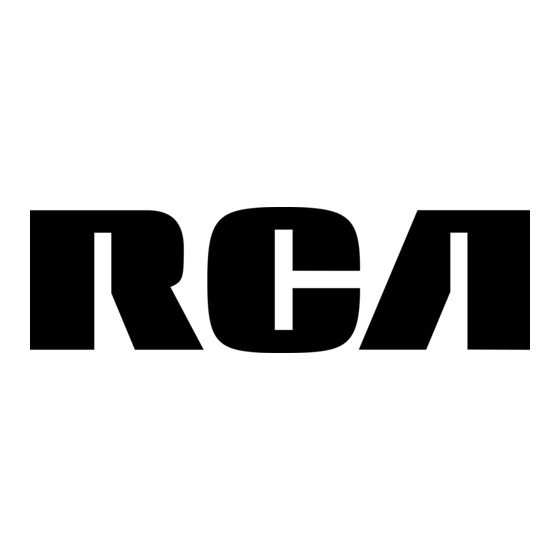
Advertisement
Quick Links
RCA Loudspeaker
Model
100
Service Notes
Non.-Cone
assembly
of
RCA
Loudspeaker Model
102
is
identical
to
Model
.100
less the filter unit
Prepared
by
NATIONAL SERVICE DIVISION
Instructions NS
-100.2
PART
I
RCA Loudspeaker Model 100
is of
the free floating
cone
type.
It
is
suspended
at
the
outer edge'by
means of
a
strip
of
soft kid
which holds the cone in
a
central position
but
does
not
impede
its movement to any
great
degree. The cone
is
attached rigidly
to
the speaker mechanism
at
the center.
In
servicing Model 100 Loudspeaker always make
certain
that
the
output
of the
Radio Receiver
used in
conjunction
with
it, is
of good
quality. If distortion
is
present
in
the Radio Receiver, RCA Model 100 Loudspeaker
will
reproduce
that
distortion
as
faithfully
as
it
does the tone
variations
of
the program.
Rattling
sounds,
or the
so-called
"paper rattles,"
are generally caused
by a
distor-
tion
in the lower tone
registers
of
the amplifying system
of
the Radio Receiver.
It
is
therefore quite important to first
check the Receiver
for quality
of signal.
This
may
be
done by
substituting another loudspeaker
of known
quality or
else
by
replacing the
loudspeaker with
a
pair
of headphones.
If
distortion
is
present either
in the second
loudspeaker or the headphones
it
is
a
positive indication
that
the trouble
is
originat-
ing
in
the Radio Receiver.
Similarly, if the Radiotrons in the Receiver are overloaded
by an
abnormally
strong
signal being forced
through
the amplifiers,
distortion
will follow.
If it
is
definitely established, however,
that
the
distortion
or
rattle
complained of
is
not
due to a defect
or improper adjustment
of
the Radio Receiver, but
is
apparently
caused by the Loudspeaker itself,
it
may
be
the result
of one of
the following conditions:
(A) Foreign material interfering
with
armature vibration.
(B) Armature striking
the
pole piece.
(C)
Cone misaligned.
(D)
Excessive pressure
on
the stylus.
(E)
Bent stylus.
(F)
Loose or bent connecting rod.
Figure
1
shows a
rough sketch
of
the complete
armature
assembly and its
relation
to the
cone.
The armature vibrates
between the pole pieces
(not
shown), this motion
being
transmitted through
the stylus to the
thrust
lever.
The
thrust
lever
is
held
rigidly
to
one of
the
motor
side pieces.
It
is
attached rigidly
to the
cone by
the connecting rod.
Dirt at
any
of these
points may cause distortion.
On
inspecting the RCA
Model 100
Loudspeaker, note whether or not the stylus
is
bent, if
so
straighten
it. The
cone
is
attached
to the connecting rod
by means of
a
small
nut "B", Figure
1.
The
end of
the connecting rod
is
threaded. Make certain
that
the
cone
is
drawn up
tight
to the connecting rod.
If
the
two
foregoing points
have been checked and found
to
be
O.K., note whether
or
not the armature
is
striking
the pole pieces. Figure
la
and
Figure
2
show
the relation
of
the
armature
to the pole
pieces.
There
should
be
a space
approximately
.010 inch
Between
the
armature
and the pole pieces,
Figure
la.
This
is
true at both
ends of
the
armature.
3
Advertisement











Need help?
Do you have a question about the 100 and is the answer not in the manual?
Questions and answers